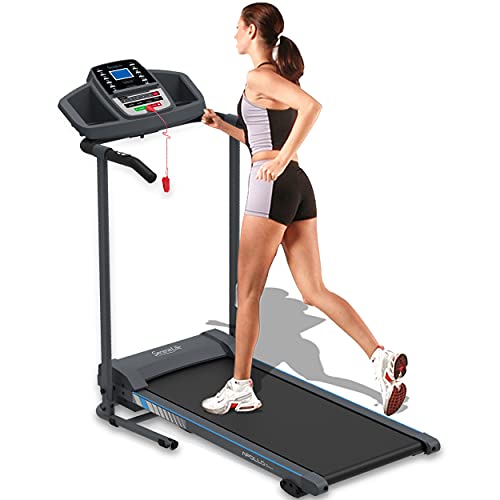Non-Folding Treadmills: The Ultimate Guide for Fitness Enthusiasts
As home fitness continues to get traction, lots of people are seeking devices that satisfies their needs without jeopardizing quality or efficiency. One key gamer in this arena is the non-folding treadmill. Unlike folding treadmills, which are created for compactness and portability, non-folding treadmills are normally more robust, providing boosted durability and machine efficiency. This guide will explore the functions, advantages, limitations, and choices available for non-folding treadmills.
What is a Non-Folding Treadmill?
A non-folding treadmill is a stationary exercise machine that does not have the ability to fold its deck for storage. Particularly developed to be an irreversible fixture in physical fitness areas, these treadmills generally have a bigger footprint, enabling a host of comfortable features fit for severe runners and gym-goers.
Advantages of Non-Folding Treadmills
- Stability and Durability: Non-folding treadmills usually have a sturdier building and construction, providing boosted stability throughout high-intensity exercises. They are developed to handle diverse user weights and running paces, which can prolong their life-span.
- Advanced Features: Many non-folding models come geared up with advanced technological features, such as wise display systems, automated incline adjustments, and pre-set workout programs, which accommodate severe fitness enthusiasts.
- Larger Running Surface: These treadmills often provide a larger and longer running area, which can be especially helpful for runners who prefer to train at greater speeds or for those with longer strides.
- Better Motor Performance: Non-folding treadmills normally have more effective motors compared to their folding equivalents, allowing for much better performance throughout intense running sessions.
Drawbacks of Non-Folding Treadmills
- Space Requirements: Since they do not fold, non-folding treadmills require more space in your house or gym. If area is a restriction, this may be a critical consideration.
- Absence of Portability: These devices can be troublesome to move. It is challenging to relocate a non-folding treadmill compared to a folding one, which might be a disadvantage for those who move frequently or rearrange home fitness center layouts often.
- Price: Non-folding treadmills are normally more expensive than folding treadmills, generally due to their sophisticated functions and long lasting develop.
Secret Features to Consider
When trying to find the best non-folding treadmill, several features need to be considered to guarantee you make a notified decision:
| Feature | Value |
|---|---|
| Motor Power | Look for a motor of a minimum of 2.5 CHP for strong performance. |
| Belt Size | A belt width of 20 inches or broader is ideal for convenience and security. |
| Incline Range | An incline of 10% to 15% provides more workout range. |
| Innovation Integration | Consider designs with Bluetooth abilities, exercise apps, and heart rate tracking. |
| Warranty | A robust guarantee (a minimum of 10 years for the frame and motor) indicates toughness. |
Leading Non-Folding Treadmills on the Market
Here is a thorough introduction of some of the leading non-folding treadmills currently available:
| Treadmill Model | Motor Power (CHP) | Running Surface (inches) | Incline (%) | Price Range (GBP) | Warranty |
|---|---|---|---|---|---|
| NordicTrack Commercial 1750 | 3.75 | 22 x 60 | 15 | ₤ 1,799 - ₤ 2,199 | 10-Year Frame, 2-Year Parts |
| Sole F85 | 3.5 | 22 x 60 | 15 | ₤ 1,699 - ₤ 2,099 | Lifetime Frame, 5-Year Parts |
| Life expectancy TR3000i | 2.5 | 20 x 56 | 15 | ₤ 999 - ₤ 1,299 | Life Time Frame, 5-Year Parts |
| ProForm Pro9000 | 3.0 | 22 x 60 | 15 | ₤ 1,499 - ₤ 2,299 | Lifetime Frame, 2-Year Parts |
| Horizon Treadmill 7.0 AT | 3.0 | 20 x 60 | 12 | ₤ 899 - ₤ 1,099 | Lifetime Frame, 1-Year Parts |
Frequently Asked Questions About Non-Folding Treadmills
1. Are non-folding treadmills much better than folding ones?Non -folding treadmills normally use much better stability, durability, and more sophisticated functions. This makes them ideal for severe runners, but it eventually depends on private needs and available area.
2. Can a non-folding treadmill be utilized for walking?Yes! Non-folding treadmills are not restricted to running; they can also be ideal for walking and can accommodate a large range of physical fitness levels. 3. Just how much area do I require for a non-folding treadmill?It is advised to have a devoted area determining a minimum of 7 feet long and 3 feet broad around the treadmill for safe usage. 4. Is it possible to transport a non-folding treadmill?While it can be done, it might need extra effort as they are typically heavierand bulkier than folding designs. 5. What's the typical life-span
of a non-folding treadmill?With regular upkeep and appropriate usage, non-folding treadmills can last in between 10 and 15 years or more.
Non-folding treadmills represent a considerable investment
for those serious about keeping or enhancing their health and fitness. With their focus on toughness, stability,
and improved features, they cater to users striving for efficiency and durability. Choosing the right design includes carefully considering your workout habits, area schedule, and spending plan. By understanding the attributes that make non-folding treadmills an excellent alternative, people can make informed choices that will enhance their home physical fitness experience. Whether click through the next website page 's for walking, jogging, or high-intensity training, the right non-folding treadmill can be a considerable ally in achieving fitness goals.

